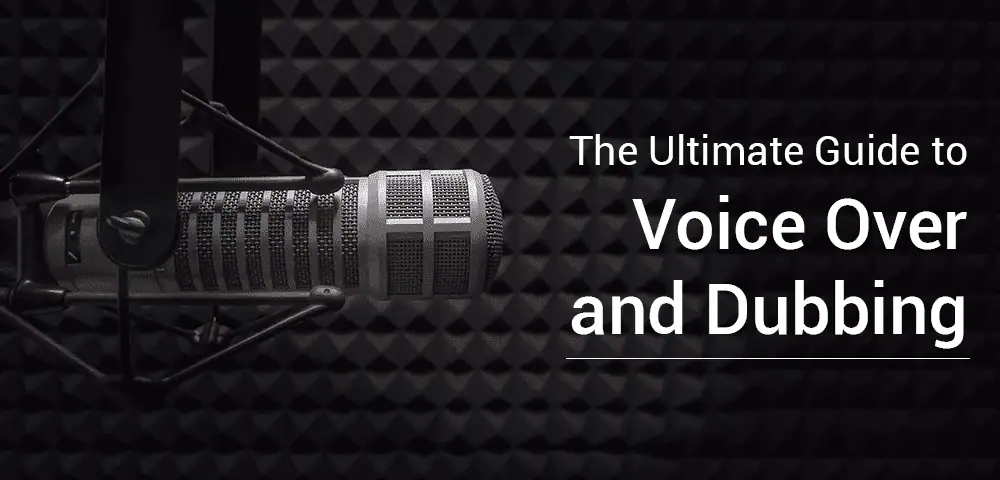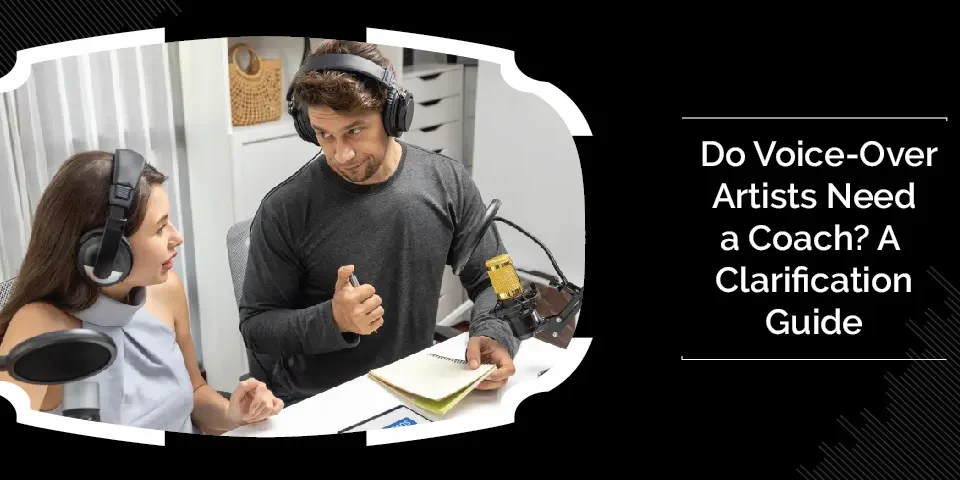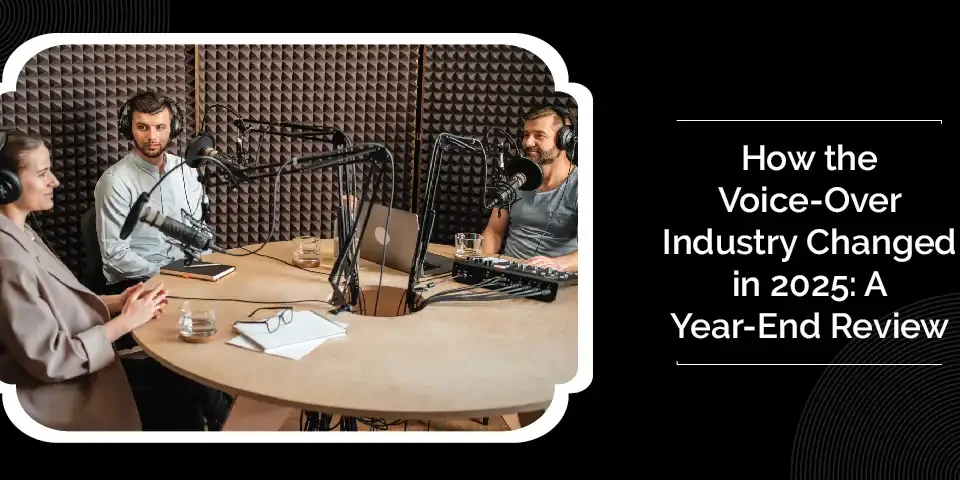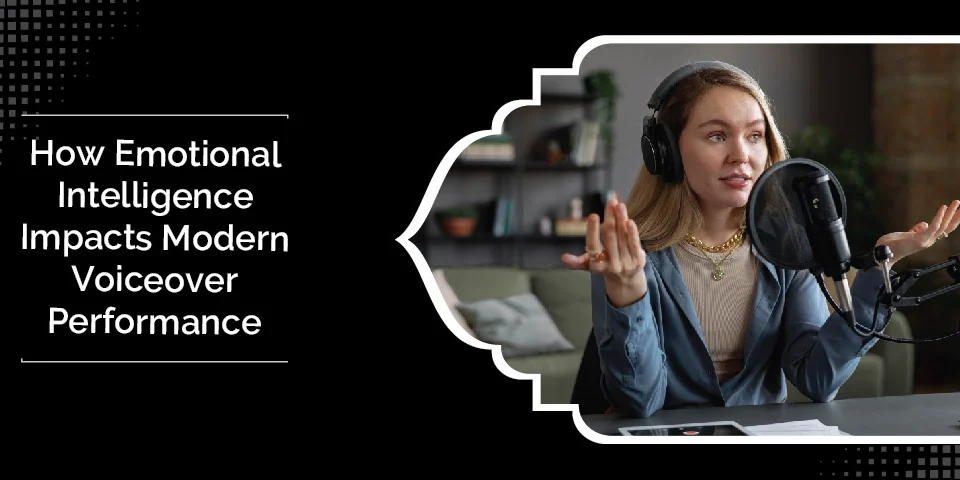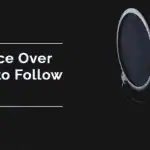
Top 11 Voice Over Podcasts to Follow
May 2, 2022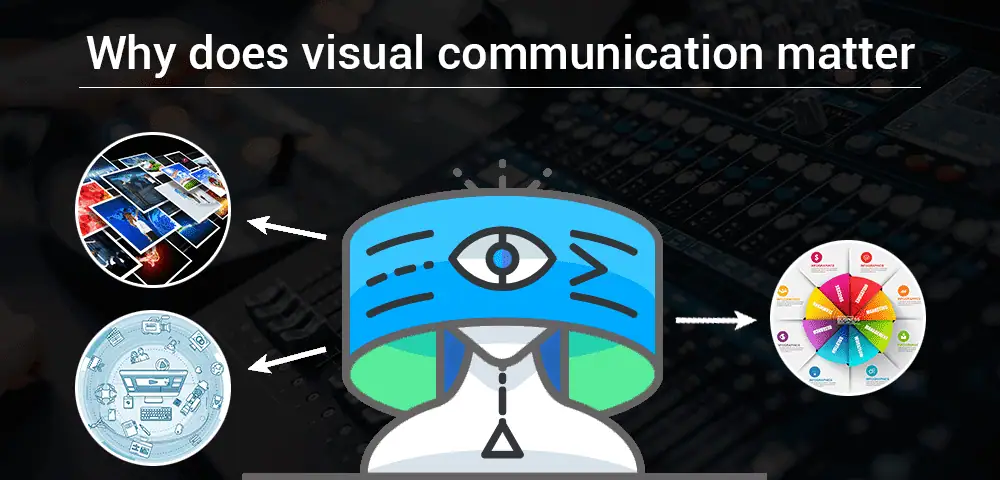
Why Does Visual Communication Matter?
July 11, 2022Whenever you come across a video that has separate audio added to it, in your mind, the instant reaction you have is – oh, that’s a voice over. But did you know that the same could be a dubbing instead?
The concept of voice over and dubbing is an old one, but most people still get confused with these terminologies. In this particular blog post, we will analyse the difference between voice over and dubbing by understanding the key factors.
It’s important to note, that if we were to get into any technicalities, then voice over is also a type of dubbing. To understand this better, it’s important to understand that there are typically two options to add language to your video:
- Option A: Either you make use of subtitles displayed on your screen
- Option B: Or you can re-voice the original audio
The topic of voice over vs dubbing comes in when you are considering Option B for your video. This ‘re-voicing’ can be done either through ‘voice over’ or a ‘dubbing’. So, without further ado, let’s understand these terms better.
Contents
A. What is Voice Over?
A voice over typically refers to a female or a male voice over artist who records their voice in a quiet setting, such as in a soundproof studio booth, using a high-quality microphone. This recorded voice is used in multiple broadcast avenues like commercials, documentaries, corporate films, explainer videos, podcasts, audiobooks, and more.
With a voice over, you typically add the recorded voice over to the existing recording. However, the focused audio is the one that is added on top, in the form of a voice over.
We can, however, still hear some of the original audio in the background. Voice overs give you the liberty to not bother about lip-syncs and hence are easier to incorporate. Also, in this instance, you are only broadly interpreting the content, not focusing on the tone or the emotion associated with it.
B. What is Dubbing?
In simple terms, Dubbing is often referred to as language replacement, which makes it very different from voice over. The aim of dubbing a video is to ensure that the original audio of the video is completely replaced with the dubbed audio file. This is a lot more technical because with voice replacement, extra care needs to be taken to ensure lip movements are in overall sync.
A voice dubbing artist spends hours in a studio so that the final recorded audio is as close to the original one as possible. So even from a time perspective, dubbing is a time-consuming process.
C. Difference between Voice over and Dubbing?
Now that we better understand the voice over and dubbing terminology, let’s briefly analyse the difference between both.
1. Usage: A voice over should be used when you need to create a storytelling experience. A dubbing option is preferred when you need to completely replace the original audio, while keeping it as close to the original video as possible. Dubbing doesn’t add to any storytelling experience because the whole point is to match the original audio.
2. Duration of the content: When it comes to a voice over, it is preferred for a video with a shorter duration. Whereas, dubbing could be used even for longer durations because if a style is finalised, the same can be replicated across.
3. Cost: A voice over is generally an economical option because there are lesser requirements, as you do not need to match any voice. Hence, with just one or two voice over artists, you can get the job done. A dubbing may cost you more to get the right voice for dubbing.
4. Interference: A voice over is not replacing the original audio but only enhancing or translating the content. Dubbing, on the other hand, will hardly cause any interference with the original video because it is replacing the audio in its entirety.
5. Replacement A voice over is used for ‘language replacement’ in a video. For example, if your video is shot in a regional language but you wish to showcase it to global audiences, you require language replacement. Dubbing, on the other hand, takes into account ‘voice replacement’ where you are trying to better or change the original voice in the video through the dubbing artist’s skills.
#Voice over vs Dubbing: Which Should I Pick?
The simple answer to this question is that it depends. Every business requirement would be unique, and depending on your need, you can make an informed choice whether voice over would be needed to enhance your video or should you use dubbing. Ideally, this could be a simple decision if you analyse either of these parameters.
1. What is your video requirement?
What is the current quality of your video? Does it require enhancement? If it requires enhancement, then you must analyse which type of enhancement is needed. If there is translation needed, you can stick to a voice over option. If the main character in the video is not audible enough, or if you require a stronger voice, dubbing should be your preferred option.
2. What is your budget?
Typically, dubbing is bound to cost you more. It may also be time-consuming because finding the right dubbing artist is difficult. Voice over artist, on the other hand, is easier to get on board. They are also quite versatile and can adapt their style to suit the needs of the project.
Both of these options serve different purposes, and hence knowing your requirement is the most crucial part before choosing either.
Conclusion
Over the years, videos have become absolutely essential to convey a story or talk about your brand. With the increase in the requirement, the expectations on the quality of the video have also gone up. As such, it’s important to ensure that your video quality is top-notch. To this end, to enhance the quality of the video, it is important to streamline your requirement and choose an option between voice over and dubbing that best suits your need.

Peter Abraham
Peter Abraham is a versatile voice-over artist based in Mumbai working in the voiceover industry since 2009. With a passion for storytelling and meticulous attention to detail in every project, he brings scripts to life with his captivating voice and professional delivery, exceeding client expectations. Whether it's a commercial or an audiobook, Peter specializes in a wide range of voice-over work, ensuring the highest quality.

